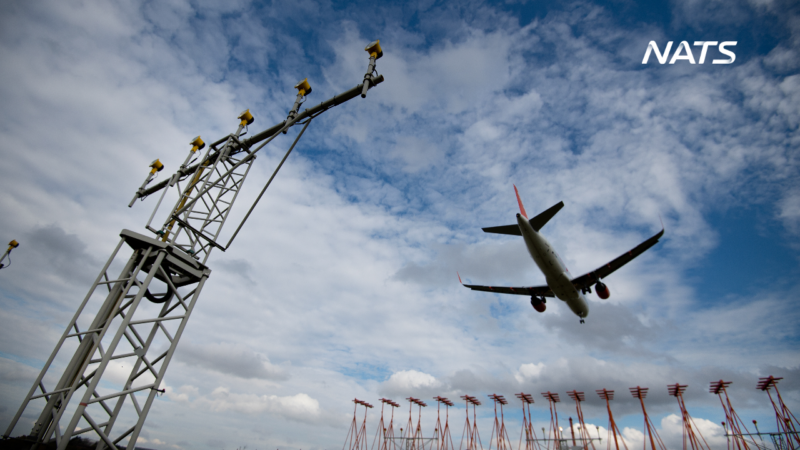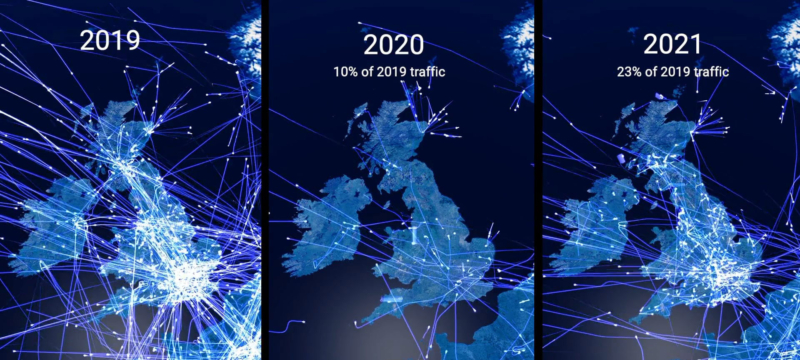This week we announced we’re giving away our environmental performance metric, 3Di – or ‘Three Dimensional insight’ – to stakeholders across the aviation community that would like to use it.
We introduced 3Di in 2012 when NATS became the first air traffic service provider to be financially incentivised on our environmental performance. Ever since, it has allowed us to measure the efficiency of our airspace and identify areas for improvement.
Since 3Di was introduced we’ve enabled savings of over 6 million tonnes of aircraft CO2 and it’s been a cornerstone of our efforts to strive for greater sustainability in the service we offer our airline customers.
We’re proud of what we’ve achieved, but the fact is climate change is everyone’s problem. Given much of the aviation industry has committed to reaching net-zero emissions by 2050, keeping 3Di to ourselves doesn’t make any sense, so we have taken the decision to make the technology and algorithms that sit behind it available to the wider industry.
But how does 3Di actually work? It compares the actual trajectory of each aircraft (from real radar data) against an optimal or airline-preferred flight trajectory that would minimise fuel burn and CO2 emissions. Put another way, it measures how close we get to the ‘perfect flight’ for each flight in our airspace.
A preferred trajectory or ‘perfect flight’ would include a continuous climb from the ground up to and optimal cruise, followed by a continuous descent back to touchdown, with the full profile taking the most direct possible route. Importantly it takes into consideration the entire flight trajectory, not just the two dimensional route.
A flight that meets all these ‘perfect’ criteria would get a score of zero. Anything that causes it to deviate from that, be it airborne holding, a stepped climb or descent or cruising at a sub-optimal flight level sees that score increase.
Of course, the reality of flying through the UK’s (usually) extremely busy airspace means no flight is ‘perfect’, but by making this comparison between actual and optimum trajectories we’ve been able to establish a clear indication of our environmental efficiency, track our performance over time, and set targets for improvement.
Since 2012 NATS has been set 3Di targets to achieve every year. If we beat the target we can earn a bonus, miss the target and we pay a financial penalty.
Looking at our 3Di performance allows us to identify hotspots in our airspace, investigate why that might be the case and look for ways to improve it. A very obvious example would be the time aircraft spend in holding stacks at Heathrow which, together with the airport and through the use of new tools and technologies, we’ve been able to reduce over the years. But it also allows us to have informed conversations with our controllers about the importance of things like continuous climbs and descents which we also reinforce in our operational training.
This has helped us make valuable gains, as I’ve outlined, but the biggest influence on our 3Di score is the underlying structure of UK airspace, which doesn’t always allow us to offer the optimum routes we’d like. That’s something that will have to change over the coming years and will help make a major contribution to our industry’s net zero target, while advances such as sustainable aviation fuels and electric aircraft remain longer term prospects.
We hope that giving 3Di away might help other air traffic service providers or airlines to make sustainability improvements to their own operations. It’s not a silver bullet, but it has helped make a difference to us and when we consider the huge challenge posed by climate change, every little helps.
Comments
Please respect our commenting policy and guidelines when posting on this website.





22.04.2021
12:32
Peter
It would be interesting to have an ECAC dashboard like this. Congratulations for this long-standing program and service. Once, i4D is implemented, more detailed data could be available to this application and surely more options could be built within it.